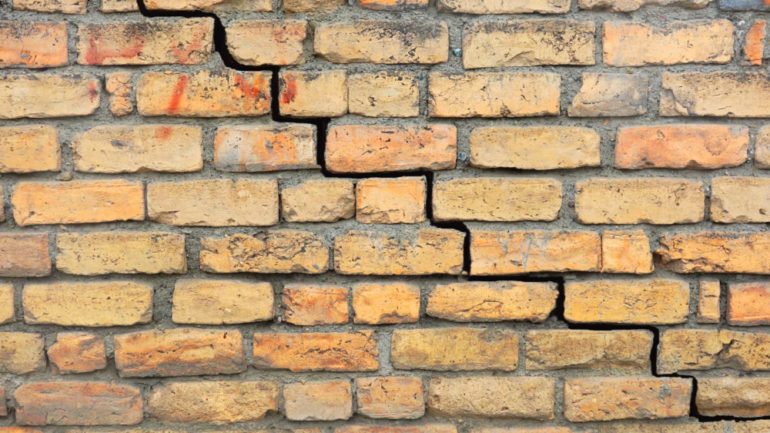It’s the house repair every homeowner fears: foundation problems. Before you panic, here’s how to tell whether those scary looking cracks are “no big deal” or a sign of real trouble.
No worries. If you are living in a new construction home, expect minor settling that causes small cracks here and there. Hairline cracks that run straight along a sheetrock seam are an example. As the new house settles, the sheetrock ever so slightly pulls apart and the paper tape that covers the seam gets a very fine crack, almost undetectable. They’re not pretty, but not a major worry.
Other hairline cracks that can cause needless worry are those found on the stucco covering of the foundation slab. Most newer homes have a cosmetic veneer of nicer concrete spread over the foundation to provide a more attractive look than the actual concrete slab. Again, as the house settles, and as climate affects that veneer, it may develop hairline cracks. As long as it doesn’t expand and spread, it’s probably simple shrinkage.
Real problems. It’s time to start worrying if you see one of these seven signs of foundation issues:
- Larger than hairline cracks develop on the slab, not the concrete veneer. Or the veneer falls away revealing a crack in the slab.
- A bulge develops in the side of the foundation.
- A crack goes up the outside wall of the house, zigzagging upward, cracking brick and mortar.
- Cracks develop on the interior walls or ceiling that veer across the sheetrock.
- Doors and windows drag, stick, or are hard to either open or close. Window glass may crack. A gap between the door and frame may be visible when the door is closed.
- Floors begin to tilt. Use a level set at various points on the floor, or place a ball on the floor in different spots. It shouldn’t roll.
- An unexplained significant increase in water usage. If you haven’t increased lawn watering or household use, check all fixtures and sprinkler heads for drips and leaks. If you don’t find any sign of leakage, look at your water meter. Check it when no water is being used in the house. If the spinner continues to turn, water is flowing somewhere. Check the usage numbers before bed and again early in the morning. Look for water appearing in the basement, or around the outside of the foundation. Water could be leaking inside a wall or under the foundation. Radon gas from underground and surface water can also become a risk if it enters the home from these cracks.
What to do. Like shopping for any other home contractor, research online and ask friends for referrals. Evaluate them on the Better Business Bureau’s website at www.bbb.org. Look them up on review sites. Look for companies that have been in business a long time, decades if possible. A company in business for decades is doing things right.
Foundation evaluation. Expect the contractors you select to do a thorough inspection. Ask if they offer multiple repair methods. Ask if they are certified by professional organizations? Is their work evaluated by the International Code Council Evaluation Services or ICC-ES? Are they licensed and insured? Ask for copies of all these documents.
Request a copy of a scaled drawing of the house foundation and a warranty of all work. Request that the warranty be transferable to a new owner.
Cost. Types and severity of foundation problems vary, and types of soils around the country affect the price. Repair prices range from $1,800 for minor problems to more than $12,000 for major issues.
Buyer beware. Foundation problems are always something that should be on a prospective buyer’s radar. If the seller or the listing agent is aware of a foundation problem, they are legally bound to disclose it to potential buyers.


